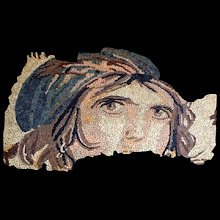In the rest of Europe, mosaic went into general decline throughout the Middle Ages. However a flourishing tile industry led to mosaic tiling patterns in abbeys and other major religious buildings, for example. These tiles from Prior Crauden's Chapel at Ely Cathedral date from around 1320. The floor of the Chapel features a detailed tiled scene of Adam and Eve. As well as the interlocking patterns of tiles, there are some other mosaic techniques, including pseudo mosaic and opus sectile.

In the 19th century there was a revival of interest, particularly in the Byzantine style, with buildings such as Westminister Cathedral (left) and Sacre-Coeur in Paris. In Britain, this was fuelled by the concentration of wealth that the Victorian era brought, with increased domestic and public building projects. New techniques for mass-producing tiles meant a renewed of interest in decorative floors. The Gothic Revival in architecture and design looked back to medieval themes – and this was reflected in the way tiles and mosaic were used. Another industrial influence was Antonio Salviati, who is credited with breathing new life into the Venetian glass industry. He saw the business opportunity in matching the ancient skills practised in Venice with the Victorian demand for glass mosaic.

No comments:
Post a Comment